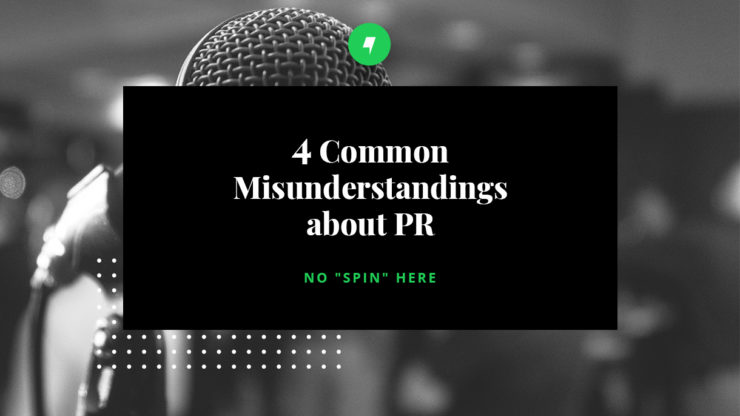Public relations can be a hard concept to understand. Public relations is an abstract concept as it works to change perceptions over time. Not to mention, measuring success can be more challenging than say traditional advertising campaign.
Here are a few of the misunderstandings PR practitioners regularly run into.
Misunderstanding #1. Media coverage is easy and occurs instantly – just send a pitch or release and someone will cover it.
In reality: Garnering coverage takes time. The process usually includes writing newsworthy copy (via a release or pitch); creating a media list based on a what a reporter covers, who they are writing for, and how they prefer to receive information; sending a thoughtful and targeted email; following-up – and then repeating the process. All of these steps typically have to happen before a story or announcement is covered by media.
Misunderstanding #2. Press releases don’t work anymore.
In reality: The press release is a time-honored method of relaying important information in a concise way to a media source and it isn’t going anywhere. PR practitioners know that a strong release must have a media hook, give appropriate detail to support the message, and are written clearly and concisely. The key objective of a release is to share a correct and accurate message in a consistent format. Providing all relevant information in one place allows reporters to pick and choose the information that works best for their piece.
Misunderstanding #3. You can’t demonstrate ROI for public relations.
In reality: When a PR practitioner determines goals and objectives together with a client, a campaign or project outcome can and should be measured. The best way to demonstrate ROI is to determine the elements of a PR campaign that can be measured, such as an increase in website traffic, sales calls, awareness of an initiative, or inclusion of the key messages in coverage. For example, if a client wants to address misinformation in a market by creating key messages that will create a consistent voice for all spokespeople, ROI is determined by tracking the usage of the key messages in all coverage.
To see a successful messaging PR campaign, check out our work with launch of the Delaware County Health Department.
Misunderstanding #4. Public relations professionals “spin” a story to manipulate the truth.
In reality: PR professionals work to share a client’s story accurately and effectively, while at the same time emphasizing the most important messages of the company. For example, when a company has an announcement to make, PR representatives gather all the information and determine the most important messages the company should share. This isn’t ‘spinning’ a story, it is prioritizing points so the media and key audiences can easily understand the most important information and how it affects them.
While correcting every misunderstanding about PR would be impossible, it is every PR practitioner’s duty to ensure people understand the value that PR can add. It’s also important to enforce the reality that PR is an important part of the entire marketing mix and cannot function in a vacuum. Together we can get the truth out there!
Posted In Public Relations
 Veronica Mikitka Reed
Veronica Mikitka Reed 

